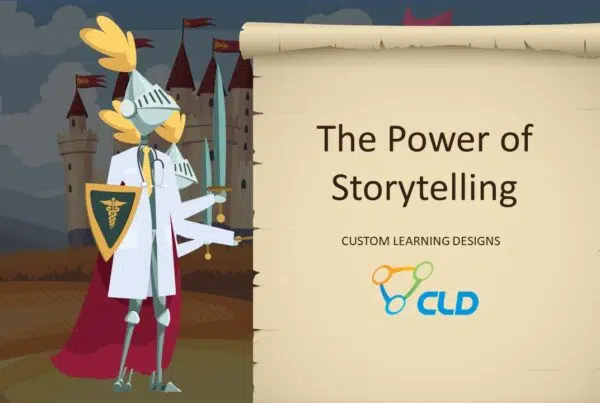I didn’t want to be a trainer. I had no desire to leave the field. I was a salesperson; competitive by nature, and I enjoyed the accolades and recognition that came with achieving goals. From a career standpoint, I just wanted to manage a team, but I knew very little about leadership. So, senior leadership said, “Put her in training. There she will learn.” Wait, what?
Becoming a sales trainer ended up being a transformational role for me, but it didn’t start out that way. At first, I thought it was just a springboard to management. I hated the thought of sitting in endless meetings, managing budgets, and working 8 hours in a cubicle. But those things ended up being the easier things to adapt to – it was the more practical things I wished someone had prepared me for. With this preparation, perhaps I would have spent a little less of my first year in training feeling drained and defeated. If I were to speak to my much younger self, as she began her first training role, there are five things I would tell her:
1. If you do not learn something from the people you are training; chances are, they will learn nothing from you.

2. Those that think they need training the least are the ones who need it the most.
I was that rep. I had been the one with years of experience in the industry, and here comes the new trainer who never made a number in her life, and she was going to show me how to be successful? Fat chance. News flash! Success isn’t about time served, and experience doesn’t always equate to knowledge. In my years as a trainer, the lessons I learned at the senior center always resonated. I knew my audiences well, and eventually championed the tenure of every class I led. I came to realize that a learner becomes more engaged and far more open to learning themselves if they can be part of the process and share what they already know. Many times since, I have had a learner commend me because they came in believing I couldn’t teach them anything new, and they left learning something of value. You need to earn your stripes, kid. Once you do, you will have their attention.
3. There is a big difference between teaching someone to do something, and training someone to do something.
You can teach anyone something new. You don’t need a Ph.D. to transfer learning to another person. All you need to understand is the objective for learning. Take swimming, for example. A teacher will teach someone how to swim to the other end of the pool without drowning. A trainer, however, will teach someone how to get to the other end of the pool first. There is a totally different objective in training, which I didn’t initially understand. I thought that I was supposed to train them and set them loose, and the rest was left to the managers to cultivate. Not every manager is a trainer, which is why having the training experience prior to management, is so valuable. You don’t have to teach them all you know, you just need to train them to get to the other end of the pool first.
4. The 80/20 Rule also applies to your learners – remember, you are helping to build your organizational culture.
We have all heard this adage in sales – “swim with your whales”. 80% of your business comes from the top 20% of your customer base. While we are spending time trying to infuse this methodology into our new hires, it is imperative that we apply that ratio to our training style. While learners are there to learn, as trainers, we have responsibility to let the learning be organic. Guide them, but let 80% of the live learning time be practical application (do and show), and only 20% should be didactic (teach and learn). It doesn’t matter how complex the curriculum is, this is about the class learning, not you teaching. Long after they return to the field, they will continue to reach out to the people they learned with – anytime they have a question, or a problem, or need to be talked down from a ledge – it is their classmates they will turn to. They will look their names up first on the national rankings, and they will seek each other out at meetings. There is a bond there; a trust, because they learned with and from each other. Let it happen.
5. It is impossible to measure the value of training with standardized exams, but you will still be held to that scrutiny.
When you are in the field, it is all about analytics. Percent to goal, share, trends, gain versus loss – incentives are based on it, and right or wrong, so are promotions. I liked the fact that there was a concrete number to chase in sales, but as you migrate to training, those concrete numbers become a bit more nebulous. Companies try to measure a return on the investment of training through test scores and performance measures, but know that in almost every instance you will fall short of expectation. There are factors that affect learning that you will never be able to control – most notably, the irrational need for our industry to get people onboarded and out the door quickly in order to salvage market share in a vacant territory. Training should be a feat of endurance, not a finite solution. It should sustain over time, and build. As a trainer, your battle cries to make training endure will often fall on deaf ears when there are other pressing needs, but that is business. Learning is progressive. Not everyone will get it right away. Not even you.
Younger self, I made an entire career out of the one job I never wanted. Don’t be so closed minded, and enjoy the ride!
Andrea H. Pagnozzi is a program design manager at CLD, www.cldinc.com, with 18 years of leadership experience in sales, marketing and training in the pharmaceutical, biotechnology and medical device industries.




























